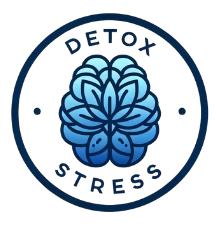This is taken from the Bible in Proverbs 18:21. Another Scripture that reinforces the neuroscience of being or becoming what you say—based on how you think about yourself—is Proverbs 23:7: “As a man thinketh in his heart, so is he.” In other words, your thoughts shape who you are.
The Neuroscience of Focus and Identity
When you focus on your illness or identify yourself with it, several key changes occur in the brain due to neuroplasticity, emotional regulation, and the mind-body connection. Here’s how this plays out:
Strengthening Maladaptive Neural Pathways (Neuroplasticity)
- The brain operates on a “use it or lose it” principle—neural circuits you activate frequently become stronger.
- If you constantly focus on symptoms, pain, or limitations, the default mode network (DMN)
—which is linked to self-referential thinking and rumination—becomes hyperactive. - Repeated negative focus reinforces pathways related to su ering, making it more likely
your brain will default to these thought patterns in the future.
2. Overactivation of the Stress Response (HPA Axis)
- Chronic worry or illness-focused thoughts trigger the hypothalamic-pituitary-adrenal
(HPA) axis, signaling a threat response. - This leads to sustained cortisol release, which:
Suppresses immune function.
Increases inflammation.
Disrupts healing-related brain regions, such as the prefrontal cortex (rational thinking,
emotional regulation).
Shrinks the hippocampus, impairing memory and learning.
3. Altered Pain Processing (Central Sensitization)
- When attention is persistently directed toward symptoms, the anterior cingulate cortex
(ACC) and insula, which regulate pain perception, become overly sensitized. - This intensifies pain and makes the body more reactive to minor discomfort.
- Over time, the brain can become wired to perceive pain even without a physical cause
(central sensitization).
4. Weakening of the Prefrontal Cortex (Executive Control)
- Chronic focus on illness strengthens the amygdala (fear and stress center) while weakening
the prefrontal cortex, which regulates self-awareness and rational thinking. - This makes it harder to shift attention away from illness-related thoughts, reinforcing
distress.
5. Impact on the Reticular Activating System (RAS)
- The RAS filters sensory information based on focus.
- If you focus on illness, the RAS biases perception toward confirming that experience,
reinforcing identity-based beliefs like “I am sick” rather than “I am healing.”
6. Changes in Neurotransmitters (Mood & Motivation)
- Chronic focus on illness can:
Lower dopamine, reducing motivation and reinforcing helplessness.
Decrease serotonin, contributing to depression.
Reduce responsiveness to positive stimuli, reinforcing a sense of stagnation in healing.
How to Reverse These Changes
- Redirect Attention – Engage in joy-filled and meaningful activities to weaken illness
related neural pathways. - Neuroplasticity Practices – Use visualization, gratitude, and cognitive reframing to build
new, healthier neural networks. - Regulate the Nervous System – Practices like breathwork, vagus nerve stimulation, and
meditation can shift brain activity toward healing states. - NeurOptimal® Neurofeedback – This helps retrain the brain and central nervous system
by interrupting old, unhelpful cortical patterns. - Rewire Identity – Instead of identifying as sick, shift to “I am healing” or “I am resilient,”
engaging neural networks associated with hope and recovery.
By shifting focus from illness to healing, the brain rewires itself toward health, reducing stress
and improving overall well-being.
The Power of Words: A Lesson from Mel Robbins
Best-selling author Mel Robbins teaches a powerful distinction between saying, “I have
anxiety,” and “I feel anxious.”
- Saying “I have anxiety” makes it a fixed part of your identity. The brain reinforces neural
pathways that keep you stuck in stress and overwhelm. - Saying “I feel anxious” acknowledges it as a temporary emotional state—one that can be
managed and shifted.
This same principle applies to illness, self-worth, and healing.
I’ve always struggled when people say “my cancer.” To me, it sounds like they’ve gone beyond acceptance and personalized it—almost like something they own. I also rarely spoke of my diagnoses (and I’ve had plenty). Instead of saying, “I have lupus” or “I have fibromyalgia,” I preferred saying, “my health issues.”
Why? Because I never wanted to attach my identity to a label that didn’t serve me. I watched my mother do this growing up—after a while, every interaction revolved around symptoms and disease. How depressing.
Identity and Habits: A Lesson from James Clear
In Atomic Habits, best-selling author James Clear explains that you become the identity of the
habits you repeatedly perform.
Rather than just setting goals, he emphasizes shifting your identity—every action is a vote for
the person you want to become.
For example:
- Instead of “I want to be healthy,” say “I am a healthy person,” and make daily choices that
support that identity. - Instead of “I’m always sick,” say “I am healing,” and reinforce that belief with your actions.
This shift aligns with biblical wisdom and neuroscience—it’s empowering and transformative.
How the Brain Adapts to This
The brain is highly adaptable due to neuroplasticity. The thoughts we repeatedly focus on
shape our neural pathways.
Negative self-labeling (“I am anxious,” “I hurt all over,” “I always fail”) strengthens those connections, making them feel more true over time. This creates a self-fulfilling prophecy— thoughts dictate emotions, which influence behavior and outcomes.
Empowering self-talk (“I am feeling anxious, but I can handle this,” “I am healing,” “This is temporary, and I will move through it”) rewires the brain for confidence, calmness, and resilience.
How This Shapes Your Life
Over time, your dominant thoughts and words create the lens through which you see the
world.
- If you focus on negativity and self-doubt, your brain filters reality to confirm those beliefs,
making life feel overwhelming. - If you consciously reshape your thoughts, aligning them with biblical wisdom andneuroscience, you train your brain to expect and create positive outcomes. It is of utmost importance that we create an inner sense of safety—in our world, bodies, and thoughts. Cultivating inner peace allows us to break free from limiting patterns and live more fully.
Faith & Science: The Key to Healing
When we combine the timeless wisdom of Scripture with the powerful insights of
neuroscience, we unlock a profound truth:
Our words and thoughts shape our reality.
By aligning them with God’s truth, we don’t just change our mindset—we rewire our brains,
creating a life of resilience, health, and purpose.
Remember, friends, your test can become your testimony. God calls us to take every thought captive and align it with His Word.
When we do this:
We renew our minds.
We break free from limiting beliefs.
We step into the abundant life God has for us.
And as we transform, we become a light for others, guiding them toward healing and hope.
Let’s speak life, think truth, and move forward in the freedom God intended!
Blessings,
Marly Jones


